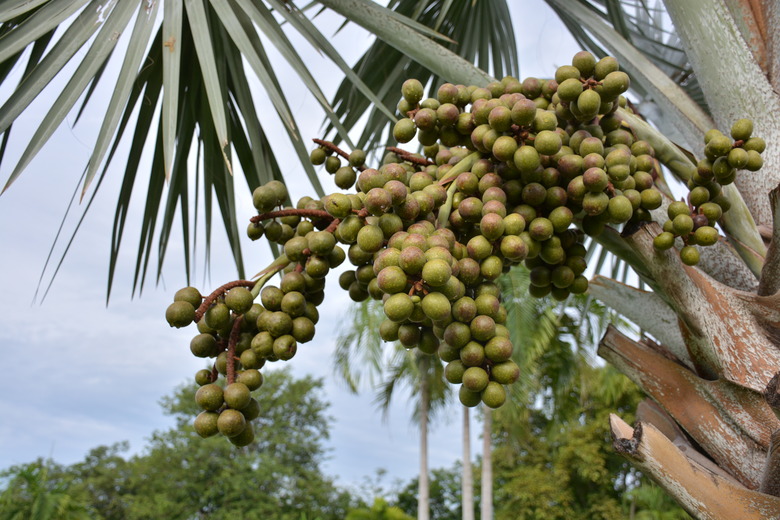How To Prune A Bismarck Palm
We may receive a commission on purchases made from links.
Slow growing, the Bismarck palm (Bismarckia nobilis) develops a stout trunk topped with large, stiff, powdery silver fronds. Native to Madagascar, this tropical palm grows outdoors in the United States in humid climates across some areas of Florida, coastal Southern California and Hawaii, correlating to U.S. Department of Agriculture hardiness zones 9 through 12.
Bismarck palm needs a full sun location in a garden with any well-draining soil. This plant develops a deep taproot and demonstrates good tolerance to seasonal droughts and high summer heat. Grow it in a spacious landscape, as the Bismarck palm matures at 40 to 70 feet tall and 10 to 15 feet wide over several decades.
The best practice for pruning Bismarck palms is to remove only the fronds that are completely dead. If you remove fronds that are living or only partially dead, you'll be severing a source of nutrition to the palm in the form of potassium that is essential to palm growth. However, it may be necessary to remove growth that poses a hazard along walkways or interferes with nearby plants. With this in mind, judiciously prune living growth only out of necessity.
How to Prune a Bismarck Palm
1. Assess Possible Hazardous Growth
Look at the overall shape of the Bismarck palm's canopy of fanlike fronds. It naturally becomes a rounded mass of leaves, even extending fronds horizontally and to the ground in young plants that lack a trunk or have a short one. Note if any fronds pose a hazard such as blocking a walkway, rubbing into a building facade or encroaching upon another prized plant in the garden.
2. Remove Hazardous or Sagging Fronds
Remove fronds that pose a hazard or are already dried or light brown in color and sagging along the trunk. According to the University of Florida, there's no reason to remove healthy fronds or those that grow horizontally or upward-angled in the canopy. In fact, removing healthy palm fronds stresses the plant and slows its growth and production of food.
3. Use a Pruning Saw
Saw into the base of the frond with a pruning saw about 6 inches from the trunk. Grasp the stem petiole of the Bismarck palm frond with your spare hand and balance it as you cut; it is large, heavy and cumbersome. As you penetrate into the stem with the saw, be prepared to support more weight of the dropping frond. Balance the frond as you saw to prevent it from tearing at the base and to help guide its fall.
4. Remove the Pruned Fronds
Lift the cut frond away from the palm or direct its drop to the ground after the pruning cut severs it.
5. Trim Flower Stalks
You may also want to prune other parts of the palm tree in early summer, such as the flower stalks that grow from the cluster of frond bases. Bismarck palms are either male or female based on their flowers; only pollinated female palms yield the blue-green fruits that ripen to black. Removing flower stalks improves the visual "cleanness" of the palm in some people's eyes. Keeping the flower stalks is fine, too, but they will dry to brown in fall and not look attractive.
